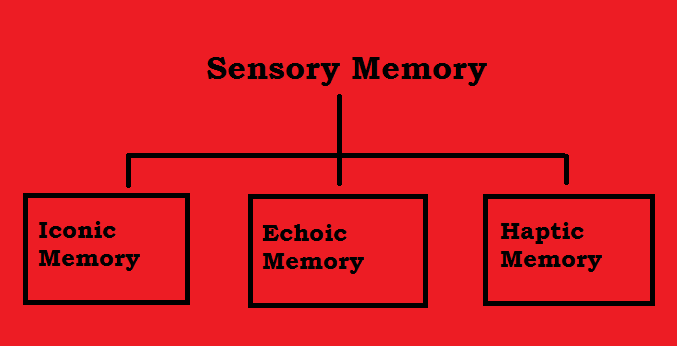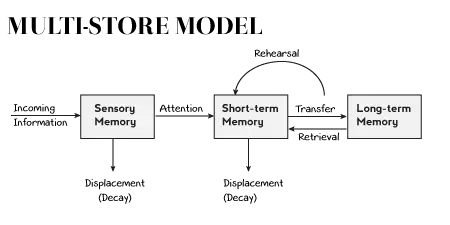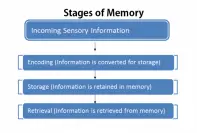Sensory memory is the part of memory where any information is first registered. Although sensory memory has a large capacity, it corresponds approximately to the initial 200-500 milliseconds after an item is perceived.
A simple example of sensory memory is to look at an item, and remember what it looked like with just a second of observation, or memorization. The degradation of information is remarkably quick in this type of memory, which does not even allow an individual to recall all of the items they experienced. A technique like Rehearsal, which proves useful in prolonging Short-Term Memory, does not work with SM.
Characteristics of Sensory Memory
This form of memory is considered to be an automatic response and is outside of cognitive control. Information stored in sensory memory can in fact be considered as the raw data that provides snapshot of an individual’s overall sensory experience.
Common characteristics of sensory memory are as follows:
- Storage of information on SM is irrelevant of attention to the stimulus.
- Information in SM is stored in specific modality. For instance, auditory information is only stored in the echoic memory, and visual information are stored in iconic memory.
- Information stored in SM is in high resolution and detail oriented.
- Sensory modality is really brief, and memory is continuously replaced by new memory once the previous information decays. Information once lost from SM is gone for good and there is no way to recover it.
Different SM store might have different durations.
SM capacity is largely influenced by genetics. Mutations to the brain, nerve growth factor, and DNA methylation also affects Sensory Memory store.
Types of Sensory Memory

Iconic memory
The type of memory that stores image, visual information, which has been perceived for a small duration is called iconic memory. It was the first sensory modality to be investigated. The experiment dates as far back as 1740.
Echoic memory
The type of sensory memory that briefly stores sounds, auditory information, which has been perceived for a small duration, is called echoic memory. Research suggests that this form of memory has a temporal characteristic, which means it is affected by timing and tempo of a presented stimulus.
Haptic Memory
The type of sensory memory that briefly stores tactile sense of touch is called haptic memory. Experiencing pressure, itching, and pain throughout the body follows various pathways, which comprises the somatosensory system, and is stored in haptic memory.
Relationship with Other Memory Systems

SM does not take part in higher cognitive functions such as information comparison and memory consolidation. The role of SM is simple; it just snaps everything we sense in a form of various senses and stores them in specific modality.
The information stored in SM, when relevant, can be extracted by Short-Term Memory to be processed by Working Memory (WM). Normally, STM can store any information for roughly 30 seconds, which is then possessed, manipulated, and controlled by the working memory. Information from STM can then be transferred into Long-Term Memory by various methods such as Rehearsal and Chunking, where memory can be stored for even a life time.
In the memory model devised by Atkinson and Shiffrin, transfer of SM to STM is the first step.


